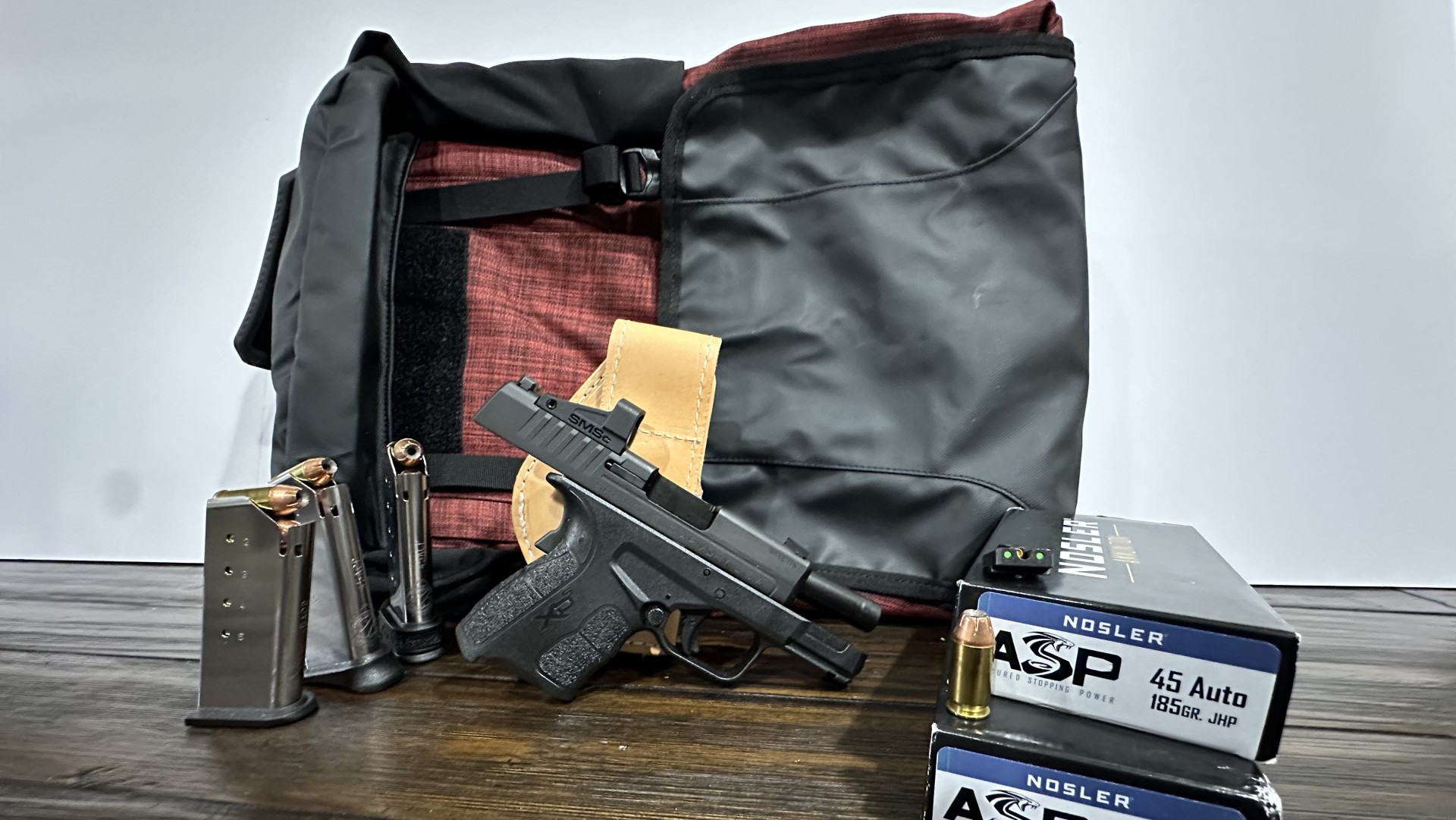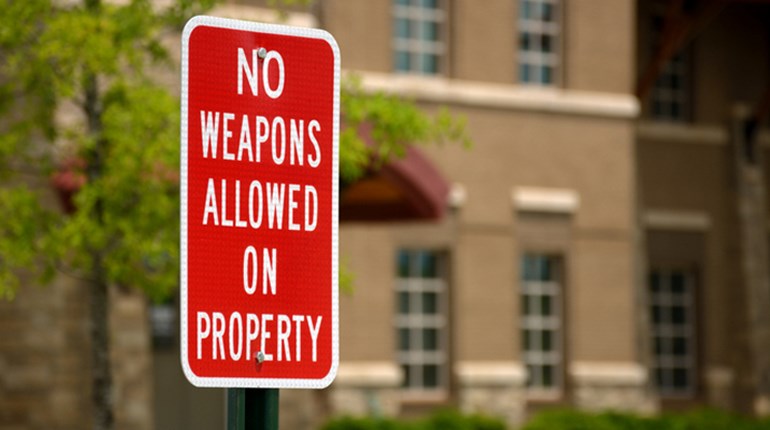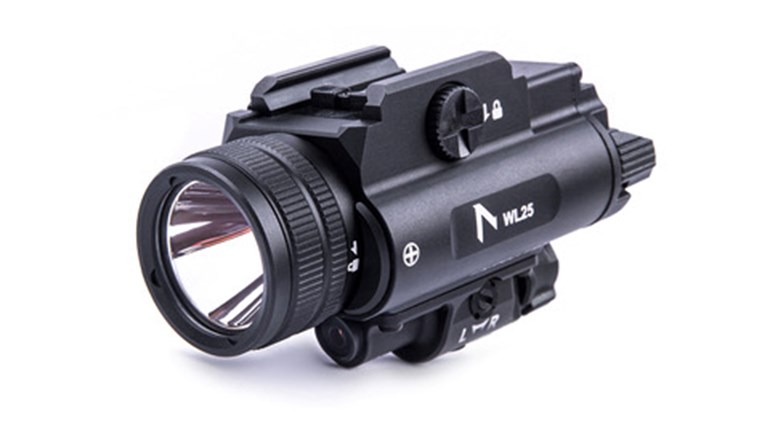
We’ve all heard about upgrading rifles with different components like triggers, stocks and other accoutrements for added benefits, but you can do the same with your concealed-carry pistol, too. While most CCW pistols come out of the box "ready to go," there are some worthwhile improvements you can make to a pistol, which may be particularly beneficial if you carry it often and count on it to potentially save your life. For the sake of this article, I decided to stick with upgrades that don’t change the mechanical performance of the pistol. (Having worked in manufacturing before, I’m a firm believer that most engineers design a product a certain way for a reason.)
Sights:
Many pistol lines come with a base model, which probably has some standard sighting system, be it a three-dot system, a U-notch or something else. While these sights will work in a pinch, they’re not ideal; typical white or blacked-out sights might be cost-effective for the more budget-conscious among us, but without a solid, reliable and, most importantly, visible sight system, shooting accurately under stress is a tall order. That’s why a night-sight system is beneficial. And if you can get a set of night sights that pull double duty with fiber optics in tandem with the glowing tritium, like the TFX or TFX Pro sights from Truglo, all the better, both for practice and practical use, day or night.
Optics:
These days, it seems like almost every pistol manufacturer has partnered with one optic company or another to offer defensive pistols with a red-dot sight installed from the factory. This is a great trend, as it fosters a “point-and-shoot” system for target acquisition. The downside is that batteries can fail, some reflex sights can be difficult to sight-in, and some people with vision issues don’t see as crisp as a dot as others. Often, an optic can help shooters get off follow-up shots faster, making them more effective and efficient if a second – or third, fourth, fifth, etc., – shot is necessary.
Many companies, even if you buy a model without a red-dot installed, offer a pistol with an optic cut so you can add one if you so choose, and then go a step further by offering optics on the company’s associated store (as with Springfield's Shield optic). Furthermore, other companies, like Leupold, offer red-dot optics specifically built for handguns, like the Delta Point Pro. Just make sure if you buy a pistol without a dot installed that the pistol in question has a cut for an optic, and that you match the cut pattern to the optic’s footprint. This is necessary for compatibility.
Holster:
Just like budget-friendly sights, most pistols ship with a holster that can be used for carrying the firearm. However, that doesn’t mean it's ideal for you. Because I carry in different ways depending on what I’m doing, I’ve got a couple upgraded holsters I’ll use. For instance, if I’m going on a weekend getaway or a short hike, I’ll take my Vertx bag with some of the company’s Tactigami components. But, if I’m doing something more casual and less time consuming, like going to the grocery store with my girlfriend, walking the dog or going to church, I’ll take a holster like my JM4 Tactical magnetic holster. In either case, both options are incredibly versatile and comfortable, far more so than what likely comes as standard equipment in the average pistol box – if it comes with anything at all.
Ammo:
This one might seem more obvious, but you’d be surprised how many people decide to skimp on upgrading their ammo. I’ve even heard this from some industry folks; they’d rather have ammo than no ammo, so they’ll take what they can get. While I can see that point, FMJ-style bullets do function for self-defense, but they're really not ideal. (One prime reason is that full-metal-jacket ammo tends to "overpenetrate," meaning that it can go through your target and continue with enough velocity to cause injuries on the other side.)
Upgrading your ammo to something more suited to your intended purpose is worth the extra expense, especially if you or your loved ones are counting on the bullet doing its job, just like you expect of your shooting and your pistol’s functionality. Companies like Nosler and its ASP line of ammo, or other offerings from ammo manufacturers like Federal, Hornady, Winchester and Barnes all make a variety of defensive ammo specifically for personal protection.
Magazines/Floorplates:
This one has some give and take to it as an upgrade, as both options have some pros and cons. With a lower-capacity magazine, a gun is more concealable and prints less, which is an obvious benefit when out in public. The con here, of course, is that you have less ammo available on hand, and may need to change magazines sooner, assuming you carry a spare or two. Going with a higher capacity can help with round count complications but makes the gun’s footprint larger.
Another pro to the extended mag is more gripping surface, so if you’ve got bigger hands, you’ll be able to get a better grip on the gun for increased recoil control. A compromise here may be changing out floorplates on your magazine to improve your grip with something like a pinky extension that won’t give you more rounds on deck, but also won’t enlarge the entire frame of the gun, either.
These simple, relatively noninvasive upgrades can be very budget-friendly if you shop around. If you're just starting out with a concealed-carry pistol and you're not 100% pleased with it, start with these tips before you shell out the big bucks for serious gunsmithing. I think you'll be plenty happy!







































